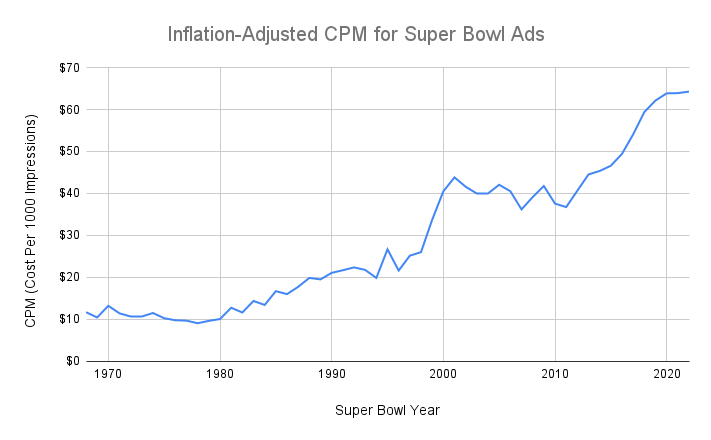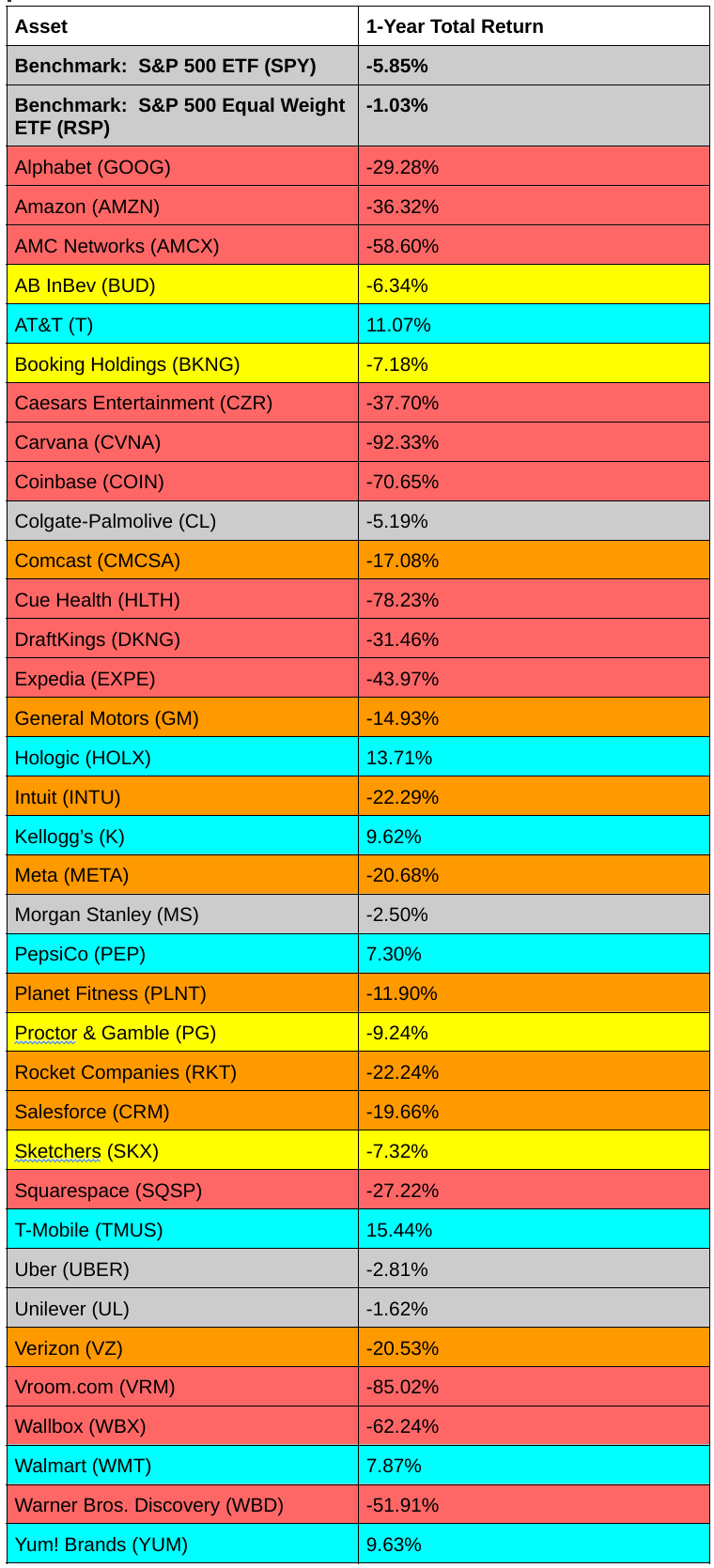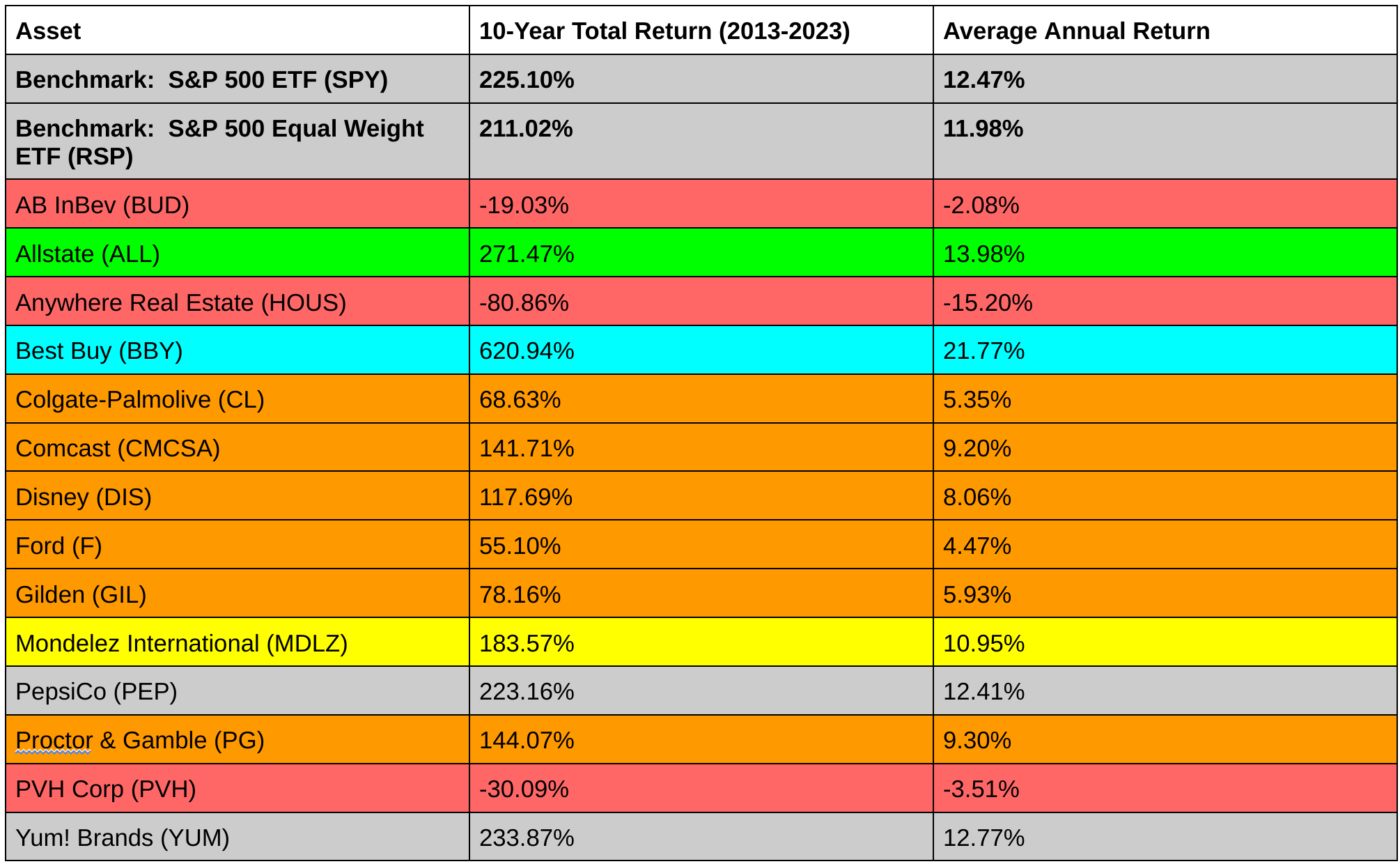| Market | Market Size | Per Capita Wealth or Income | Total Wealth or Income |
| 1 | Homeowners (not counting duplicate ownership if more than 1 person is on the title) | 83 Million | $73,000 median household (not individual) income
$255,000 median household wealth | $6.059 Trillion annual income
$21.165 Trillion total wealth |
| 2 | Independent landlords (with rental income) | 10.6 Million | $97,000 average annual income for landlords (total, not just rental) | $1.028 Trillion annual income (total) |
| 3 | Independent landlords who manage their own properties | 4.77 Million | $97,000 average annual income | $463 Billion annual income |
| 4 | Independent landlords who graduated college | 7.0 Million | $97,000 average annual income | $679 Billion annual income |
| 5 | Gun-owning households | 54 Million | $100,000+ median income | $5.4 Trillion annual income |
| 6 | Motorcycle-owning households | 10 Million | $65,000 median income | $650 Billion annual income |
| 7 | Adults aged 25+ whose highest degree is a Masters degree | 24 Million | $64,000 median income | $1.5 Trillion annual income |
| 8 | Adults with a doctoral degree | 4.7 Million | $71,000 median income | $333 Billion annual income |
| 9 | Employees in the U.S. | 139 Million | $65,000 average (not median) income | $9 Trillion annual income |
| 10 | Adults | 259 Million | $71,000 median household (not individual) income | $18 Trillion annual income |
| 11 | Adults who own stocks | 145 Million | – | – |
| 12 | American families who own stocks | 65 Million | $40,000 median stock portfolio value | $2.6 Trillion total stock wealth |
| 13 | American families who own stocks directly
(i.e. not counting index funds, mutual funds, or retirement accounts) | 18.6 Million | – | – |
| 14 | Individuals that own at least one traditional IRA | 49 Million | $189,000 average total traditional IRA assets | $9.3 Trillion in traditional IRA assets |
| 15 | Individuals that own at least one Roth IRA | 22 Million | $46,000 average total Roth IRA assets | $1.0 Trillion in Roth IRA assets |
| 16 | Individuals that own at least one SEP IRA | 3.1 Million | $158,000 average SEP IRA assets | $491 Billion in SEP IRA assets |
| 17 | Individuals that own at least one SIMPLE IRA | 3.2 Million | $46,000 average total SIMPLE IRA assets | $146 Billion in SIMPLE IRA assets |
| 18 | Individuals that own at least one IRA (of any type) | 63 Million | $175,000 average IRA assets | $11 Trillion in total IRA assets |
| 19 | Retired workers receiving social security benefits | 47 Million | $19,000 average annual social security income (not total income) | $893 Billion annual social security income |
| 20 | American households (not individuals) | 124 Million | $73,000 median household income | $9.05 Trillion (using median) annual income |
| 21 | Dog-owning households | 69 Million | $79,000 median household income | $5.45 Trillion (using median) annual income |
| 22 | Bird-owning households | 10 Million | – | – |
| 23 | Horse-owning households | 1.6-2 Million (estimates vary in this range) | $60,000 – $100,000 median income (estimates vary widely in that range) | $120-160 Billion annual income (estimated using median) |
| 24 | Adults legally taking prescription stimulants | 16 Million | – | – |
| 25 | Adults who are vegetarians (excluding vegans) | 15.5 Million | $35,000 median income | $543 Billion annual income |
| 26 | Adults who attend a Christian church every week | 55 Million | – | – |
| 27 | Jews by religion | 4.2 Million | $100,000 median household (not individual) income | $420 Billion annual household income |
| 28 | Adults who believe astrology is real
*More precisely, adults who responded “yes” to the question: “Do the positions of stars and planets influence people’s lives?” | 70 Million | – | – |
| 29 | Americans aged 18-29 who believe astrology is real | 19.6 Million | – | – |
| 30 | Adults who are “unsure” if astrology is real
(i.e. adults who responded “uncertain” to the question: “Do the positions of stars and planets influence people’s lives?”) | 57 Million | – | – |
| 31 | Adults who believe in ghosts | 103-168 Million (40-65% of the U.S. adult population) | – | – |
| 32 | People aged 13+ who identify as transgender | 1.6 Million | – | – |
| 33 | Americans aged 6+ who play golf on a golf course each year | 25 Million | – | – |
| 34 | Americans aged 18-34 who play golf on a golf course each year | 6 Million | – | – |
| 35 | Producers & directors (for film, TV, stage, and other productions) | 138,000 | $102,000 average income | $14 Billion annual income |
| 36 | Real estate brokers & agents | 224,000 | $67,000 average income | $15 Billion annual income |
| 37 | Graphic designers | 204,000 | $60,000 average income | $14 Billion annual income |
| 38 | Preschool & kindergarten teachers | 512,000 | $43,000 average income | $22 Billion annual income |
| 39 | Elementary & middle school teachers | 1.933 Million | $67,000 average income | $130 Billion annual income |
| 40 | High school teachers | 999,000 | $62,000 average income | $62 Billion annual income |
| 41 | Postsecondary teachers (e.g. community college professors, university professors, trade school instructors) | 1.34 Million | $95,000 average income | $127 Billion annual income |
| 42 | Postsecondary health teachers | 260,000 | $120,000 average income | $31 Billion annual income |
| 43 | Doctors in U.S. (actively practicing) | 1.073 Million | $232,000 median income
$260,000 average income | $279 Billion annual income |
| 44 | Dentists | 125,000 | $178,000 average income | $22 Billion annual income |
| 45 | Dental hygienists | 207,000 | $81,000 average income | $17 Billion annual income |
| 46 | Dental assistants | 347,000 | $42,500 average income | $15 Billion annual income |
| 47 | Registered Nurse (RN) | 4.2 Million | $75,000 median income
$80,000 average income | $336 Billion annual income |
| 48 | Nurse Practitioner (NP) | 235,000 | $118,000 average income | $28 Billion annual income |
| 45 | Chief executives | 200,000 | $213,000 average income | $43 Billion annual income |
| 49 | Financial managers | 681,000 | $155,000 average income | $106 Billion annual income |
| 50 | Financial analysts
(including investment analysts, personal financial advisers, insurance underwriters, financial risk specialists, etc) | 717,000 | $106,000 average income | $76 Billion annual income |
| 51 | Loan officers | 340,000 | $81,000 average income | $28 Billion annual income |
| 52 | Compliance officers | 334,000 | $76,000 average income | $25 Billion annual income |
| 53 | Management analysts
(the largest category of management analysts are consultants) | 768,000 | $93,000 median income
$101,000 average income | $78 Billion annual income |
| 54 | HR specialists | 741,000 | $71,000 average income | $53 Billion annual income |
| 55 | Accountants and auditors | 1.32 Million | $84,000 average income | $110 Billion annual income |
| 56 | Bookkeeping, accounting, and auditing clerks | 1.5 Million | $45,000 average income | $67.5 Billion annual income |
| 57 | Insurance sales agents | 423,000 | $69,000 average income | $29 Billion annual income |
| 58 | Lawyers in the U.S. | 1.328 Million | $127,000 median income
$154,000 average income | $205 Billion annual income |
| 59 | Paralegals and legal assistants | 336,000 | $58,000 average income | $19 Billion annual income |
| 60 | Software engineers, developers, and programmers in the U.S. | 4.4 Million | $110,000 median income | $484 Billion annual income |
| 61 | Computer user support specialists | 654,000 | $58,000 average income | $38 Billion annual income |
| 62 | Network and computer systems administrators | 317,000 | $91,000 average income | $29 Billion annual income |
| 63 | Actuaries, mathematicians, statisticians, operations research analysts, and data scientists | 265,000 | $104,000 average income | $28 Billion annual income |
| 64 | Construction companies
(There are at least as many construction company owners) | 730,600 | $3.28 Million average revenue | $2.4 Trillion revenue |
| 65 | Residential property remodeling companies
(There are at least as many residential property remodeling company owners) | 114,500 | $157,000 average annual payroll
(note: this is payroll not revenue) | $18 Billion annual payroll
(note: this is payroll not revenue) |
| 66 | Employees of residential remodeling companies | 388,000 | $46,400 average W2 income from residential remodeling work | $18 Billion annual income
(JUST from remodeling work W2s, not including any other income) |
| 67 | Electrical and wiring installation contractor companies
(There are at least as many owners of such companies) | 74,650 | $66,000 average annual payroll
(note: this is payroll not revenue) | $59.3 Billion annual payroll
(note: this is payroll not revenue) |
| 68 | Plumbing, heating, and AC contractor companies
(There are at least as many owners of such companies) | 101,400 | $63,000 average annual payroll
(note: this is payroll not revenue) | $69 Billion annual payroll
(note: this is payroll not revenue) |
| 69 | Manufacturing businesses
(There are at least as many owners of such companies) | 243,000 | $9.5 Million average revenue | $2.3 Trillion annual revenue |
| 70 | U.S. small business owners | 32.5 Million | $66,000 average income | $2.145 Trillion annual income |
| 71 | U.S. small businesses that are at least 51% owned by one or more women
(There are at least as many female owners of such businesses) | 11.5 Million | $66,000 average income | $759 Billion annual income |
| 72 | Owners of U.S. small businesses run from home | 16 Million | $66,000 average income | $1.056 Trillion annual income |
| 73 | Businesses with at least one employee (not counting self-employed individuals)
(There are at least as many owners of such businesses) | 6.1 Million | $1.24 Million average payroll expense
(note: this is payroll not revenue or income) | $7.43 Trillion annual payroll
(note: this is payroll not revenue) |
| 74 | Wall Street Journal total subscribers (total, not just U.S.) | 3.6 Million | $1,633,000 average household net worth of WSJ reader | $5.9 Trillion total net worth
(note: net worth, not revenue) |
| 75 | Wall Street Journal digital subscribers (total, not just U.S.) | 2.9 Million | $1,633,000 average household net worth of WSJ reader | $4.7 Trillion total net worth |
| 76 | Morning Brew total subscribers (total, not just U.S.) | Over 4 Million | $100k+ median income | $400+ Billion total income |
| 77 | Active duty U.S. military personnel | 1.2 Million | $63,000 median income | $76 Billion annual income |
| 78 | U.S. military reservists | 778,000 | – | – |
| 79 | U.S. military veterans | 18 Million | $66,000 median income | $1.2 Trillion annual income |
| 80 | Social workers in the U.S. | 677,000 | $58,000 average income | $39 Billion annual income |
| 81 | Life, Physical, and Social Scientists (in roles as such) in the U.S. | 1.274 Million | $81,000 average income | $103 Billion annual income |
| 82 | Life scientists | 305,000 | $93,000 average income | $28 Billion annual income |
| 83 | Environmental scientists & geoscientists | 107,000 | $87,000 average income | $10 Billion annual income |
| 84 | Industrial engineers | 294,000 | $95,000 average income | $28 Billion annual income |
| 85 | Aerospace engineers | 57,000 | $123,000 average income | $7 Billion annual income |
| 86 | Architects (excluding naval & landscape architects) | 100,000 | $92,000 average income | $9 Billion annual income |
| 87 | Civil engineers | 304,000 | $95,000 average income | $29 Billion annual income |
| 88 | Mechanical engineers | 278,000 | $97,000 average income | $27 Billion annual income |
| 89 | Assembly & fabrication workers | 1.8 Million | $39,000 average income | $70 Billion annual income |
| 90 | Machinists | 333,000 | $49,000 average income | $16 Billion annual income |
| 91 | Welding, soldering, and brazing workers | 428,000 | $48,000 average income | $21 Billion annual income |
| 92 | Public relations specialists | 243,000 | $73,000 average income | $18 Billion annual income |
| 93 | Writers & editors | 186,000 | $79,000 average income | $15 Billion annual income |
| 94 | Aircraft pilots & flight engineers | 124,000 | $170,000 average income | $21 Billion annual income |
| 95 | Flight attendants | 97,000 | $62,000 average income | $6 Billion annual income |
| 96 | Heavy and semi truck drivers | 1.9 Million | $50,000 average income | $95 Billion annual income |
| 97 | Commercial light truck & van drivers | 1 Million | $43,000 average income | $43 Billion annual income |
| 98 | Industrial truck and tractor operators | 758,000 | $41,000 average income | $31 Billion annual income |
| 99 | Passenger vehicle drivers
(includes bus & shuttle drivers, taxi drivers, etc) | 697,000 | $40,000 average income | $28 Billion annual income |
| 100 | Railroad workers
(not including train engineers or operators) | 119,000 | $68,000 average income | $8 Billion annual income |
| 101 | Firefighters | 317,000 | $55,000 average income | $17 Billion annual income |
| 102 | Detectives and criminal investigators | 108,000 | $90,000 average income | $10 Billion annual income |
| 103 | Police officers | 669,000 | $71,000 average income | $47 Billion annual income |
| 104 | Security guards | 1.057 Million | $36,000 average income | $36 Billion annual income |
| 105 | Building cleaning workers (janitors, maids, etc) | 2.78 Million | $31,000 average income | $86 Billion annual income |
| 106 | Landscaping & groundskeeping workers | 892,000 | $35,000 average income | $31 Billion annual income |
| 107 | First-line supervisors of sales workers (total) | 1.387 Million | $55,000 average income | $76 Billion annual income |
| 108 | First-line supervisors of retail sales workers | 1.143 Million | $47,000 average income | $54 Billion annual income |
| 109 | First-line supervisors of non-retail sales workers | 244,000 | $92,000 average income | $22 Billion annual income |
| 110 | Securities, commodities, and other financial services sales agents | 427,000 | $93,000 average income | $40 Billion annual income |
| 111 | Wholesale & manufacturing sales reps for technical & scientific products | 266,000 | $103,000 average income | $27 Billion annual income |
| 112 | Wholesale & manufacturing sales reps (total) | 1.51 Million | $78,000 average income | $118 Billion annual income |
| 113 | Customer service representatives | 2.8 Million | $39,000 average income | $109 Billion annual income |
| 114 | Postal service workers | 527,000 | $53,000 average income | $28 Billion annual income |
| 115 | Shipping, receiving, and inventory clerks | 795,000 | $38,000 average income | $30 Billion annual income |
| 116 | Secretaries and administrative assistants | 3.1 Million | $45,000 average income | $140 Billion annual income |
| 117 | Executive secretaries and assistants | 467,000 | $67,000 average income | $31 Billion annual income |
| 118 | First-line supervisors of construction trades and extraction workers | 666,000 | $75,000 average income | $50 Billion annual income |
| 119 | Construction trades workers | 4.4 Million | $54,000 average income | $330 Billion annual income |
| 120 | Electricians | 651,000 | $64,000 average income | $42 Billion annual income |
| 121 | Plumbers, pipelayers, pipefitters, and steamfitters | 451,000 | $62,000 average income | $28 Billion annual income |
| 122 | Automotive technicians and repairers | 783,000 | $48,000 average income | $38 Billion annual income |
| 123 | Android users | 120 Million | – | – |
| 124 | iPhone users | 121 Million | – | – |
| 125 | Voters registered with the Libertarian Party | 720,000 | – | – |
| 126 | Hair, nail, and skin care service business owners | 101,000 | $52,000 median income | $5.3 Billion annual income |
| 127 | Child day care business owners | 61,000 | – | – |
| 128 | Exam prep & tutoring business owners | 8600 | – | – |
| 129 | Landscaping business owners | 105,000 | – | – |
| 130 | Janitorial service business owners | 58,000 | – | – |
| 131 | Veterinary business owners | 28,000 | – | – |
| 132 | Custom software development business owners | 61,000 | – | – |
| 133 | Engineering service company owners | >50,000 | – | – |
| 134 | Accounting, tax prep, bookkeeping, and payroll service company owners | >115,000 | – | – |
| 135 | Insurance agency & brokerage business owners | >120,000 | – | – |
| 136 | Finance & insurance (entire industry) small to medium business owners | >220,000 | – | – |
| 137 | Owners of investment-related businesses excluding brokers, dealers, exchanges, commercial banks, and investment banks
(e.g. financial advisors, trust administration, and custody service businesses) | 55,000 | – | – |
| 138 | Brewery owners | >4000 | – | – |
| 139 | Law firm owners | >161,000 | – | – |
| 140 | Adult residents of Florida | 17 Million | $63,000 median household (not individual) income
$90,000 average household income | $767 Billion annual household income |
| 141 | Adult residents of Texas | 21 Million | $67,000 median household (not individual) income
$94,000 average household income | $1.0 Trillion annual household income |
| 142 | Adult residents of Washington state | 5.9 Million | $84,000 median household (not individual) income
$116,000 average household income | $352 Billion annual household income |
| 143 | Adult residents of California | 29.5 Million | $85,000 median household (not individual) income
$121,000 average household income | $1.6 Trillion annual household income |
| 144 | Adult residents of Oregon | 3.3 Million | $72,000 median household (not individual) income
$96,000 average household income | $163 Billion annual household income |
| 145 | Adult residents of NYC (the 5 boroughs) | 5.5 Million | $71,000 median household (not individual) income
$108,000 average household income | $352 Billion annual household income |
| 146 | Adult residents of Miami-Dade County, FL | 2.1 Million | $59,000 median household (not individual) income
$89,000 average household income | $85 Billion annual household income |
| 147 | Adult residents of Harris County, FL (~Houston) | 3.4 Million | $64,000 median household (not individual) income
$95,000 average household income | $165 Billion annual household income |
| 148 | Adult residents of Los Angeles County, CA | 7.5 Million | $77,000 median household (not individual) income
$109,000 average household income | $369 Billion annual household income |
| 149 | Adult residents of Cook County, IL (~Chicago) | 4.0 Million | $72,000 median household (not individual) income
$104,000 average household income | $215 Billion annual household income |
| 150 | Adult residents of Maricopa County, AZ (~Phoenix) | 3.4 Million | $76,000 median household (not individual) income
$103,000 average household income | $177 Billion annual household income |
| 151 | Adult men with who always keep a full beard | 42 Million | – | – |
| 152 | Adult men who report that their inability to grow a beard makes them feel less masculine | 30 Million | – | – |
| 153 | Individual millionaires | 22 Million | >$1,000,000 net worth | >$22 Trillion total net worth |
| 154 | Individual millionaires in California | 9.5 Million | >$1,000,000 net worth | >$9.5 Trillion total net worth |
| 155 | Individuals with a net worth of at least $5 million | 3.5 Million | >$5,000,000 net worth | >$17.5 Trillion total net worth |
| 156 | Individuals with a net worth of at least $50 million | 95,000 | >$50,000,000 net worth | >$4.8 Trillion total net worth |










